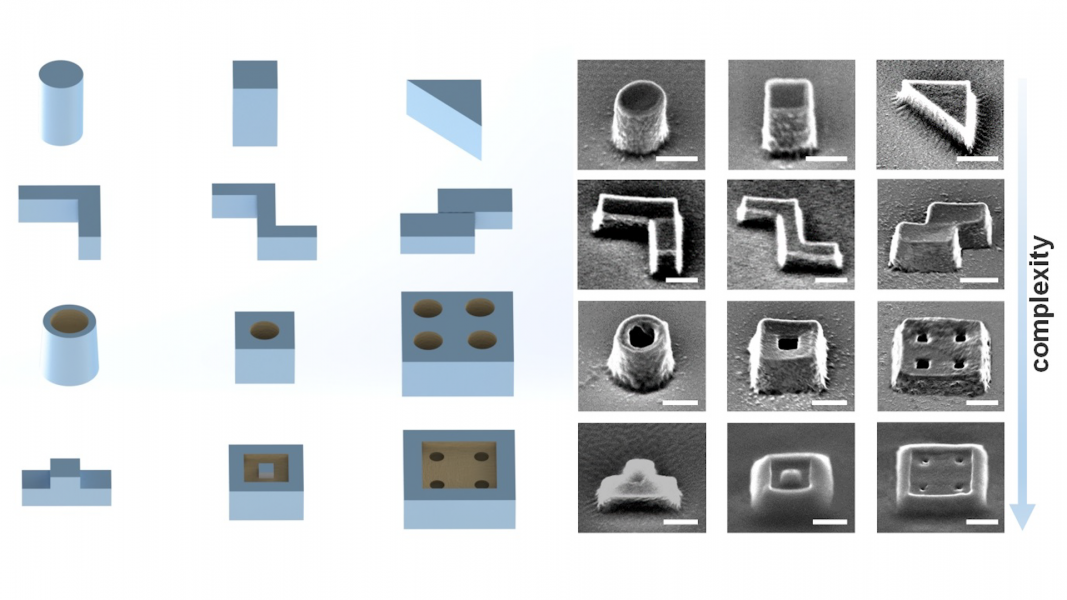Building complex structures from basic building blocks allows for precise control over the final structural design. Spider silk as a building material would give the advantages of high strength and biocompatibility—features that are essential for designing 3D structures for biomedical applications.
In a communication in Advanced Materials, Xiaoxia Xia from Shanghai Jiao Tong University; Tiger H. Tao from the University of Texas at Austin, the University of Chinese Academy of Sciences, and Shanghai Tech University; and their co-workers precisely construct 2D and 3D bio-nanoarchitectures from spider silk.
To demonstrate the technique, genetically modified, doped spider silk proteins are spin-coated into thin films, followed by ion beam lithography (IBL). A low ion dose can etch a pattern into the surface of the silk, whereas a higher ion dose induces cross-linking of the silk proteins, making them insoluble. Washing in water reveals a dot pattern down to tens of nanometers.
To demonstrate the cellular-level functions of the silk, the silks were doped with collagen and temozolomide (TMZ)—a molecule used for the treatment of brain cancers—and patterned into a mesh structure. The structures were shown to successfully guide the proliferation of neural cells or inhibit the growth of cancer cells.
A variety of 3D functional nanostructure building blocks with increasing complexity were designed and constructed using electron and ion beam lithography (EIBL), which crosslink the protein matrix from “bottom to top” and “top to bottom”, respectively. As a proof of concept, nano-spiderwebs were constructed using silk that can be further doped with fluorescent molecules. A set of nanopillars is first patterned on the underside of an amorphous spider silk film using EBL, followed by IBL on the upper side to construct the top structures.
To find out more about these spider-silk-based bio-nanoarchitectures with shape and function on demand, please visit the Advanced Materials homepage.

















